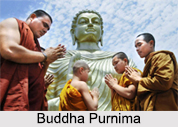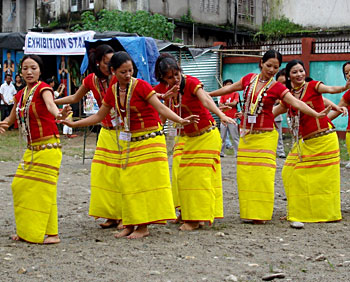Of the innumerable Hindu customs the wearing of different caste-marks by different sects of people, is one of the most prominent one. The Vaishnavaites or the followers of Vishnu, who is one of the Hindu Trinity, are subdivided into two sects. Out of which one sect wearing a caste-mark slightly different from the other. One sect goes by the name of Vadakalais, meaning thereby those belonging to the northern division and the other by the name of the Tenkalais, i.e., those that belong to the southern division. Those belonging to the first sect wear the U-shaped caste-marks and those that belong to the second sect the Y-shaped mark.
The Madhvas is another sect among the Hindus, who are also Vaishnavaites. They at least, the majority of them, worship the god named Vishnu. They wear the caste-marks using a kind of earth called Gopi Chandana.
The Saivaites are the worshippers of Siva. They use ashes, sandal and vermilion as caste-marks. Women of all sects generally use vermilion.
The marks are worn on different portions of the body, out of them the spot between the eye-brows being considered the most important. The next important place is considered to be the centre of the chest. The crown of the head is also considered a proper position to put the caste-mark on as well as the region of the navel. Besides these portions, there are also other important places of the body selected for putting the caste-marks on. In all, there are twelve regions of the body where the caste-marks are worn.
The customs are intensely interesting when their rationale is being studied. From a hygienic standpoint, it can be said that the caste-marks absorb and help the evaporation of water from the body. The marks are generally worn after a bath. Most people who are religiously inclined avoid hot or tepid water and bathe only in cold water at all seasons of the year. All knows it that certain portions of the body indicate the temperature of the body more clearly than the other portions. Generally the hand is placed on the chest or up the temples to see whether the body is hot or cold. So it may be safely presumed that the centres selected as suitable for placing the caste-marks on, are actually the spots favorable for the absorption of water from the system by the materials used for forming the caste-marks. Thus from a hygienic standpoint it can be said that the wearing of the caste-marks after a bath secures immunity for the wearer from the danger of catching cold.
Another important purpose that the caste-marks served can be mentioned as that of identification. In former times, different teachers arose establishing different religions in various parts of the country. The teachers and their immediate disciples wanted to know at a glance, which among the assembled multitude were their followers. Hence various devices were resorted to. Some had secret signs and pass-words to find out those they wanted. The mode of dress was another of such devices as well as the caste-marks.
The case of the different nations of the world can be taken. At a mere glance at the mode of dress, it can be said that the nationality to which one belongs. Similarly, the sect to whom one person belongs can be said by seeing the caste-mark that the person wears.
The Hindus believe that the sun and the various planets of the solar system are the centres in a mighty consciousness having a huge body formed of fine tenuous matter. In this huge body, there are a number of small bodies like the cells of our body. Each of these bodies, when sufficiently magnified, will be exactly like the mighty body referred to above. Further each of these smaller bodies has a central sun with the other planets. Just as the rotation of a big wheel makes the smaller wheels also attached to it rotate at rates proportionate to the size they bear to the big wheel, the movement of the planets, sets going these smaller planetary systems in our bodies also. Each of the centres vitalizes one or the other of the physical organs in man. For example, it is known that the source of all light is the sun. Without the sun one cannot have light and without the light one will not be able to see the objects. The organ of sight is the eye. So, people worship the sun to preserve the eyesight from harm.
To illustrate this, there is also a proverb which means, `There is no use of praying to the sun after the eyesight is lost.` Similarly each and every organ is said to be influenced by this or that planet. So by putting caste-marks, people indirectly set themselves on rapport with the various planets and draw vitality from them. In this way people secure immunity from harm to the various organs of the body.



















